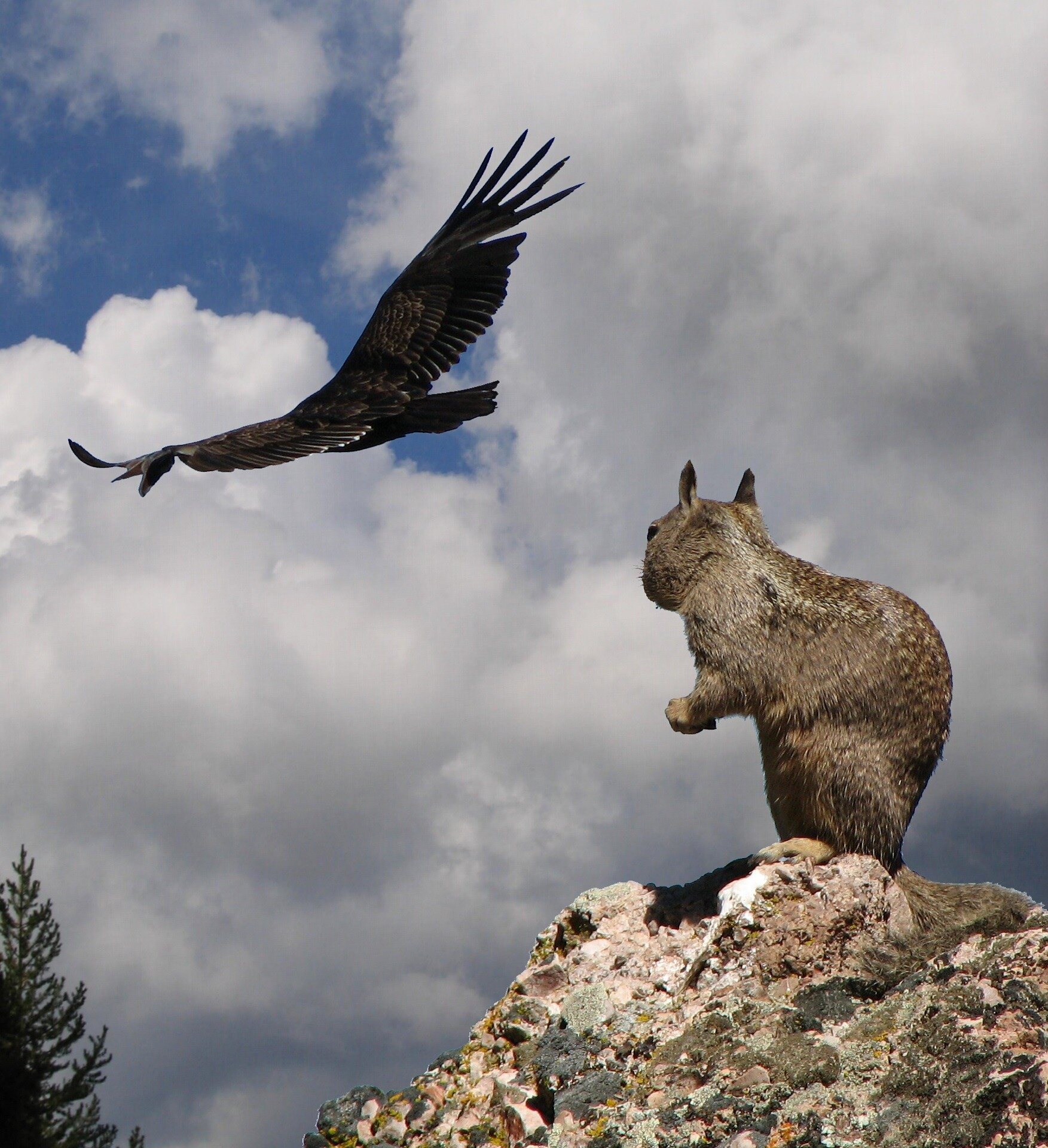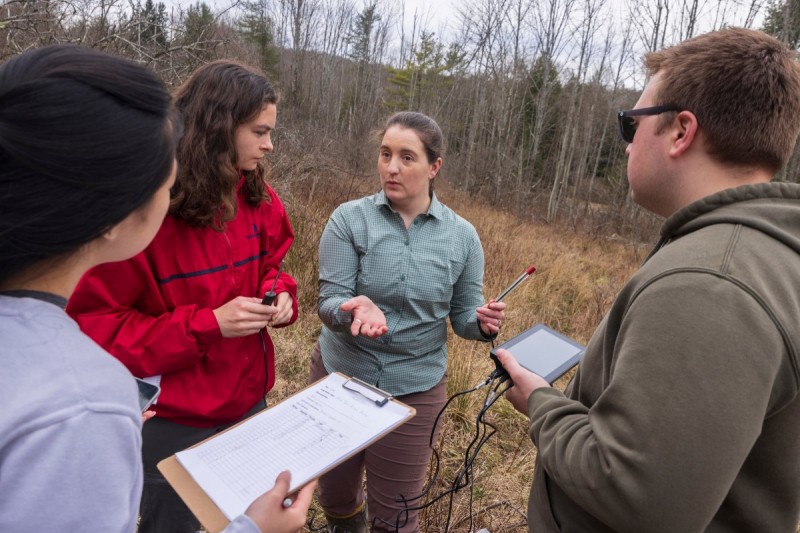Scientists find new and mysterious DDT chemicals accumulating in California condors

When Christopher Tubbs joined an ambitious multinational effort and hard work to conserve California condors from the brink of extinction, he realized the odds of achievements ended up extensive.
There were wind turbines that could strike the giant birds and guide bullet fragments in hunted animals that could sicken and kill.
But Tubbs, who reports hormone-disrupting chemical substances, suspected there was yet another threat to condor survival—a specifically problematic pesticide dumped decades in the past off California’s coastline.
Now, following many years of research, Tubbs and a workforce of environmental health experts have identified a lot more than 40 DDT-related compounds—along with a range of unfamiliar chemicals—that have been circulating via the marine ecosystem and accumulating in this legendary bird at the incredibly leading of the foods chain.
In a subtle chemical investigation posted Tuesday in Environmental Science & Engineering, the workforce identified that DDT-associated chemical substances ended up 7 situations more ample in coastal condors than condors that fed farther inland. Hunting at the birds’ coastal foodstuff resources, scientists identified that dolphin and sea lion carcasses that washed ashore in Southern California ended up also seven periods much more contaminated with DDT than the maritime mammals they analyzed together the Gulf of California in Mexico.
Just one mysterious chemical that is very likely linked to the DDT dumping in California was 56 instances extra abundant in coastal condors and 148 times extra ample in California dolphins.
“This DDT tale, and contaminants interfering with replica, is what we get in touch with a sublethal exposure,” stated Tubbs, a reproductive sciences professional at the San Diego Zoo Wildlife Alliance. “They really don’t get rid of a bird outright, but … they could interfere with estrogen receptors or any other endocrine pathway.”
This hottest examine builds on significantly-essential exploration into DDT’s toxic—and insidious—legacy in California. Community phone calls for action have intensified given that The Periods documented that the nation’s major company of this pesticide once dumped its squander into the deep ocean. As lots of as half a million barrels could even now be underwater today, according to previous data and a UC Santa Barbara examine that delivered the to start with actual glimpse of this pollution bubbling 3,000 ft below the sea around Catalina Island.
Major amounts of DDT-connected compounds are even now accumulating in Southern California dolphins, and a latest analyze joined the existence of dichlorodiphenyltrichloroethane to an intense most cancers in sea lions. A further examine centered in Oakland uncovered that DDT’s hormone-disrupting outcomes are affecting a new era of women—passed down from moms to daughters, and now granddaughters.
Just due to the fact we banned DDT 50 many years back does not indicate it has long gone away—especially in California, explained Eunha Hoh, whose lab at San Diego State’s College of General public Well being led the chemical analysis in the new condor examine. If the California condor is accumulating this sort of large quantities of DDT, that implies that every url of the coastal foods chain—including people—is also uncovered.
“The abundance is so higher in Southern California,” explained Hoh, who retains acquiring this without end chemical reappearing in new and unforeseen means. “We won’t be able to just transfer on … our ocean is so considerably extra polluted with DDT.”
Condors commanded the skies as early as the Pleistocene, when mammoths, saber-toothed cats and other megafauna prowled California. Quite a few indigenous people today these kinds of as the Chumash have occur to see the giant birds as central to their society. The Yurok know them as prey-go-neesh.
With its bald, prehistoric-wanting head and a wingspan that stretches just about 10 feet, Gymnogyps californianus stays the most significant land chicken in North The us and is a sight to behold in the wild. Its quantities plummeted, nonetheless, in the wake of trophy hunting and an more and more contaminated surroundings. By 1982, there were being only 22 California condors left on the earth.
Federal and condition wildlife officials, with the assistance of conservation advocates, agreed to capture each final chook in hopes of breeding the inhabitants back to vitality.
Preserving this critically endangered species is specifically difficult: It will take additional than six several years right before a condor is prepared to reproduce, and even then, the birds tend to lay only a person egg each and every other year. Right after decades of painstaking perform, there are now 537 California condors, supported by a community of breeding centers and reintroduction web sites from Baja California to Northern California.
Specified the guide poisoning that usually befalls a condor scavenging farther inland, lots of stage to maritime mammals as a vital food source for the species’ very long-lasting survival in the wild.
But in 2006, when condors introduced alongside the Huge Sur coast eventually started to mate, numerous of their eggs failed to hatch. Scientists commenced researching how remnant DDT in the surroundings could be at play.
“Our ongoing function has shown that the far more decades a woman condor spends on the coast, and thus most likely feeding on maritime mammals, the reduce the likelihood her egg will hatch,” stated Myra Finkelstein, an environmental toxicologist at UC Santa Cruz whose research group has also been instrumental in pinpointing the result in of direct poisoning in condors.
A large obstacle for her subject, she mentioned, is the frustrating quantity of chemical compounds polluting the natural environment. Investigation like this new study, which Finkelstein reviewed but was not a part of, goes a prolonged way in assisting toxicologists figure out wherever and how to focus their analyses.
For this newest analyze, scientists at San Diego State’s University of Public Health and fitness teamed up with the San Diego Zoo Wildlife Alliance to hook up more of the chemical dots.
They took blood samples from 19 condors that soared together the Major Sur coast and 20 condors that lived generally inland. Working with a large-tech instrument known as a mass spectrometer, they sorted through hundreds of substances and methodically discovered each and every DDT-similar compound in the blood samples—and applied the exact same strategy to the blubber of marine mammals from equally the Southern California coast and the Gulf of California.
They cataloged a suite of DDT compounds, which include two suspicious chemicals—TCPM and TCPMOH—that are most likely a byproduct of DDT producing, defined Nathan Dodder, an environmental analytical chemist at SDSU. These at present unmonitored chemical compounds were also existing in the dolphins they analyzed, as effectively as the sediment gathered near the barrels dumped in the deep ocean.
Very minimal is acknowledged about these substances, said Margaret Stack, an environmental health scientist at SDSU and very first creator of the paper. She pointed to a single examine so considerably that examined TCPMOH on zebrafish—the aquatic-edition of lab mice—and uncovered that the chemical is acutely poisonous to its embryos at elevated concentrations.
These are all clues that could assist determine what to glance for when tracing the legacy of DDT by way of the coastal ecosystem, claimed Lihini Aluwihare, a marine chemist at the Scripps Institution of Oceanography who was not affiliated with the study.
“We seriously need to recognize in which these animals are accessing the DDT. … What [this study] provides is a far more detailed appear at the fingerprint of pollutants in the condors,” reported Aluwihare, who has been piecing together how different resources of DDT have been entering the food stuff website. “This presents us a thing to compare, after we get the form of data that we are hunting for from the dumpsites.”
David Valentine, whose UC Santa Barbara investigate staff very first came across the submerged barrels, reported that the discovery of TCPM in this kind of superior concentrations is a major piece of the puzzle.
He’s convening key experts, regulators and policymakers in a convention this 7 days to talk about following measures. Researchers recently received a round of funding from Congress to do additional chemical assessment and assemble far more data—including additional mapping of the seafloor to ascertain the scope of the dumping.
Quite a few concur that there is an in general will need for much better monitoring—not just for the DDT-related substances that we know about, but also the types that could possibly be emerging soon after so many a long time of interacting with the ecosystem.
“We now see it in marine mammals, significantly dolphins. We’ve recognised about some of the fish in shallow h2o. We know that sea lions have increased burdens of DDT-associated compounds, and now we are viewing the condors are also accumulating both of those DDT and these other DDT-related compounds in the form of TCPM,” Valentine explained. “To me, that claims that we have received a dilemma. … We have to have to now go back and comprehend what the legacy of those people compounds definitely was—and fully grasp the place it really is coming from, and what we may possibly be able to do shifting forward.”
Back again on the southernmost reaches of the condor’s historic habitat, Ignacio Vilchis has been guiding the restoration group down in Baja California—coordinating throughout borders to enable these endangered birds prosper again in the wild.
With the most up-to-date findings showing that the Gulf of California is a lot significantly less contaminated for condors, he hopes that releasing additional birds in Baja could assist the in general populace maintain by itself very well into the future.
An oceanographer by coaching, Vilchis sees the condor as inseparable from the wellbeing and long run of our ocean. If we are able to conserve the condor, he said, that implies we are also conserving so substantially other life alongside the way.
His deal with lights up as he describes the awe he feels when a condor soars overhead. Their wings are so huge that you can hear them beating the air.
“It can be just … it is really pretty majestic,” he stated, at a momentary reduction for words and phrases. “There is something incredibly magical about them. You glance up and there is certainly a 10-foot wingspan traveling over. It often presents me chills.”
DDT contaminants in marine mammals might threaten California condor recovery
2022 Los Angeles Times.
Dispersed by Tribune Content Company, LLC.
Citation:
Scientists uncover new and mysterious DDT substances accumulating in California condors (2022, May possibly 17)
retrieved 18 May well 2022
from https://phys.org/news/2022-05-experts-mysterious-ddt-substances-accumulating.html
This doc is issue to copyright. Aside from any honest dealing for the purpose of non-public review or investigation, no
part may possibly be reproduced without the composed permission. The content material is offered for information and facts purposes only.






